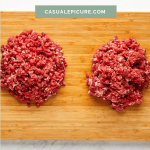This post may contain affiliate sales links. As an Amazon Associate, I earn from qualifying purchases. Please see my full disclaimer policy for details.
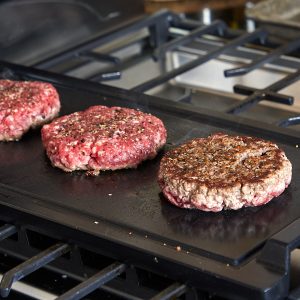
One of the most iconic foods to enjoy off the backyard barbecue is a hamburger. There’s something just special about the smell of patties on the grill sizzling away that is the core of many happy memories. We’ve experimented with various options – from ready-made patties and budget-friendly ground beef to upscale, grass-fed beef and even ground buffalo – the unmatched taste and texture achieved by grinding your own custom blend surpasses them all. Plus grinding your own beef lets you customize the flavor and seasoning to get an unbelievable tasty, juicy burger.
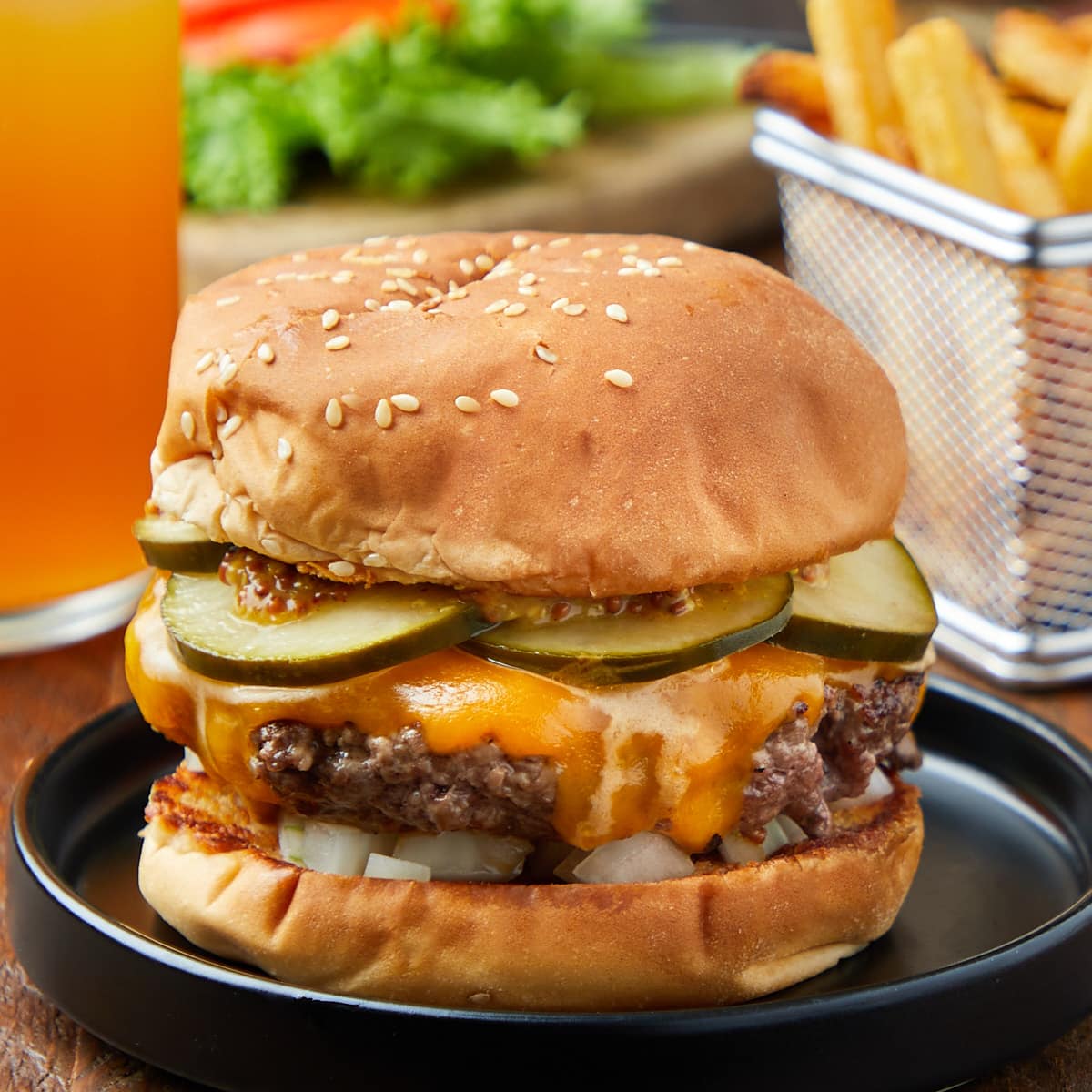
Best Meat for Hamburgers
There are many different cuts of beef that you can choose, based on your taste and budget. For the most part, it’s good to combine two to three different cuts that will contribute to the flavor and texture for a the best burger. Regardless of the beef you choose, you should trim any excess fat that won’t render out or any silver skin to achieve a balanced fat ratio for burgers. Aim for a final fat content in your grind of around 20-30%. We prefer to use a combination of short rib and brisket for our burgers.
- Boneless Short Rib: High in fat and flavor, this cut makes for exceptionally moist and rich burgers.
- Brisket: Usually used for chili, brisket has a beefy taste and higher fat level, which contributes to creating a rich and flavorful burger.
- Chuck Steak: Known for its rich flavor and ideal fat-to-lean ratio, making it a favorite for juicy, flavorful burgers.
- Sirloin: A leaner option that delivers a robust beef taste. Mixing it with fattier cuts can enhance moisture and flavor.
- Round: Extremely lean and more affordable, suitable for those seeking a lower fat option. It is best to combine this beef with fattier meats.
- Tri-Tip: Similar to sirloin, it’s moderately lean and flavorful, benefiting from blending with fattier cuts.
- Flank: These cuts include London Broil, skirt steak, hanger steak, and flank steak. These cuts of beef are flavorful and juice but also affordable. They tend to be leaner cuts of beef so combine it with fattier cuts of beef.
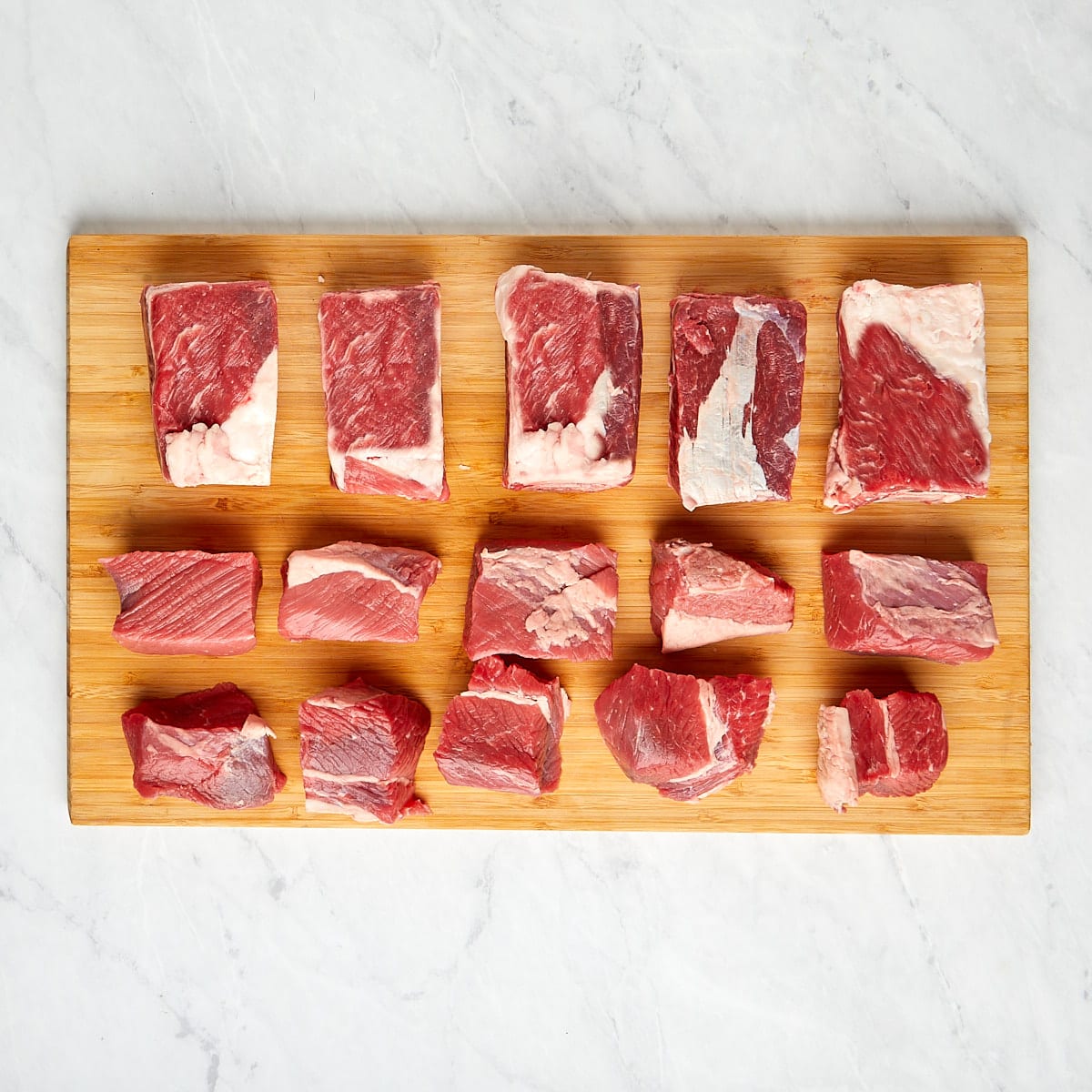
How to Grind Beef for Burgers
Here are the quick step-by-step instructions with visuals; you can find the full instructions with the exact ingredients in the recipe card below.
This post may contain paid affiliate sales links. As an Amazon Associate, I earn from qualifying purchases. Please see my full disclaimer policy for details.
Pro-tip: Putting the metal components of the appliance you’re going to use in the freezer with the meat will help to keep the fat solid, creating a pebbly texture instead of turning the beef into a pasty slop.

We’ve tried two different methods for grinding beef for hamburgers and both yielded excellent results. If we had to choose one over the other, we slightly preferred the texture from the KitchenAid food grinder (left), plus clean up was easier. However, using a food processor (right) is still worth it compared to store-bought ground beef.
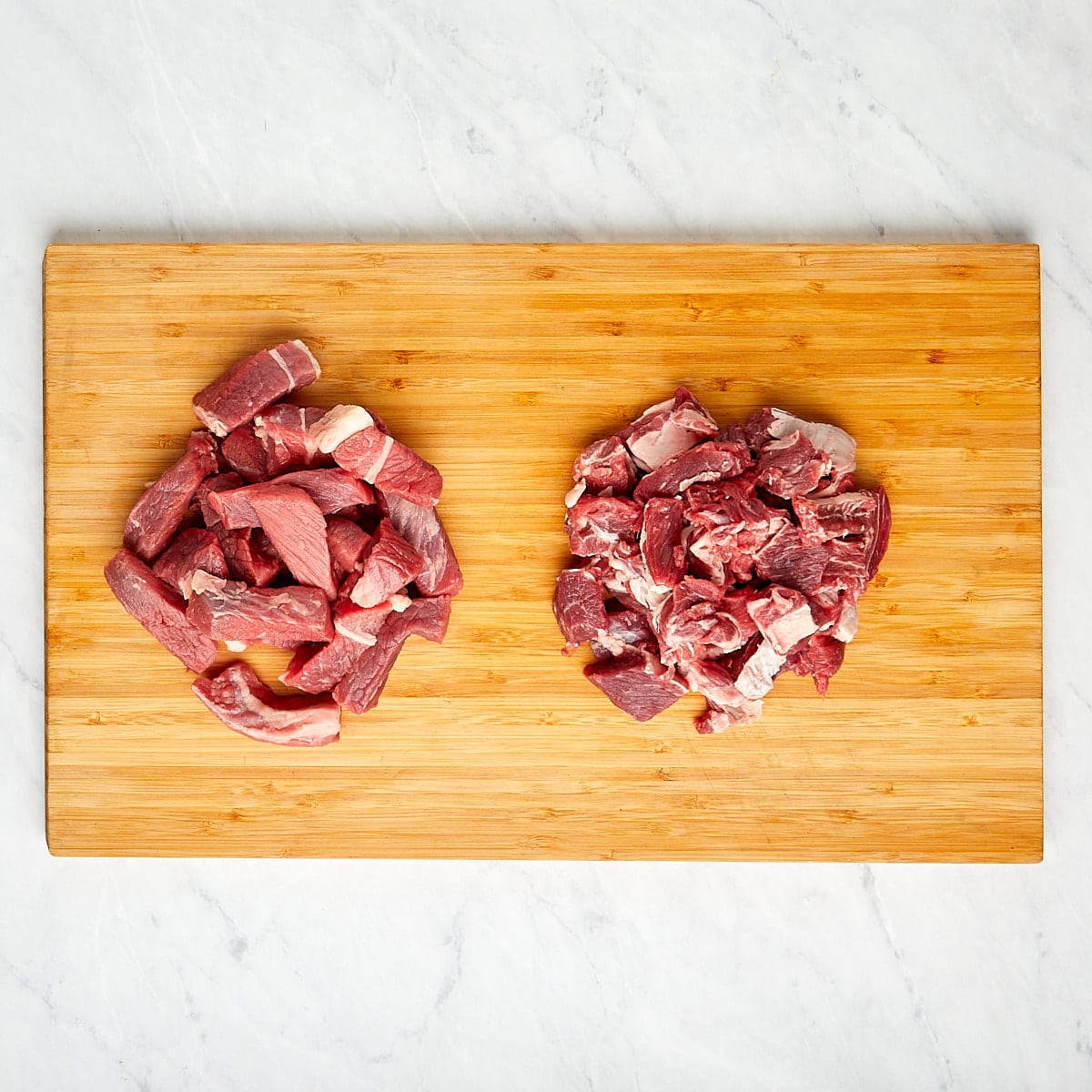
1. Cut the meat: Remove any excess fat from the beef and cut the meat into 1 to 1 1/2 inch cubes, mixing the different kinds in a bowl so when you grind the various muscle fibers are evenly distributed.
2. Slightly freeze the meat: This is the key to achieving the perfect grind, but you don’t want to over do it. 30-45 minutes is sufficient to firm up the fats in the beef cubes, but the muscle fibers should still yield to a firm squeeze between two fingers. Don’t forget to put the metal blade and the medium grinder plate in with the freezer as well for the best results.
3. Grind the beef: Once your beef cubes are firm but still yielding, you can remove them from the freezer and begin grinding it.
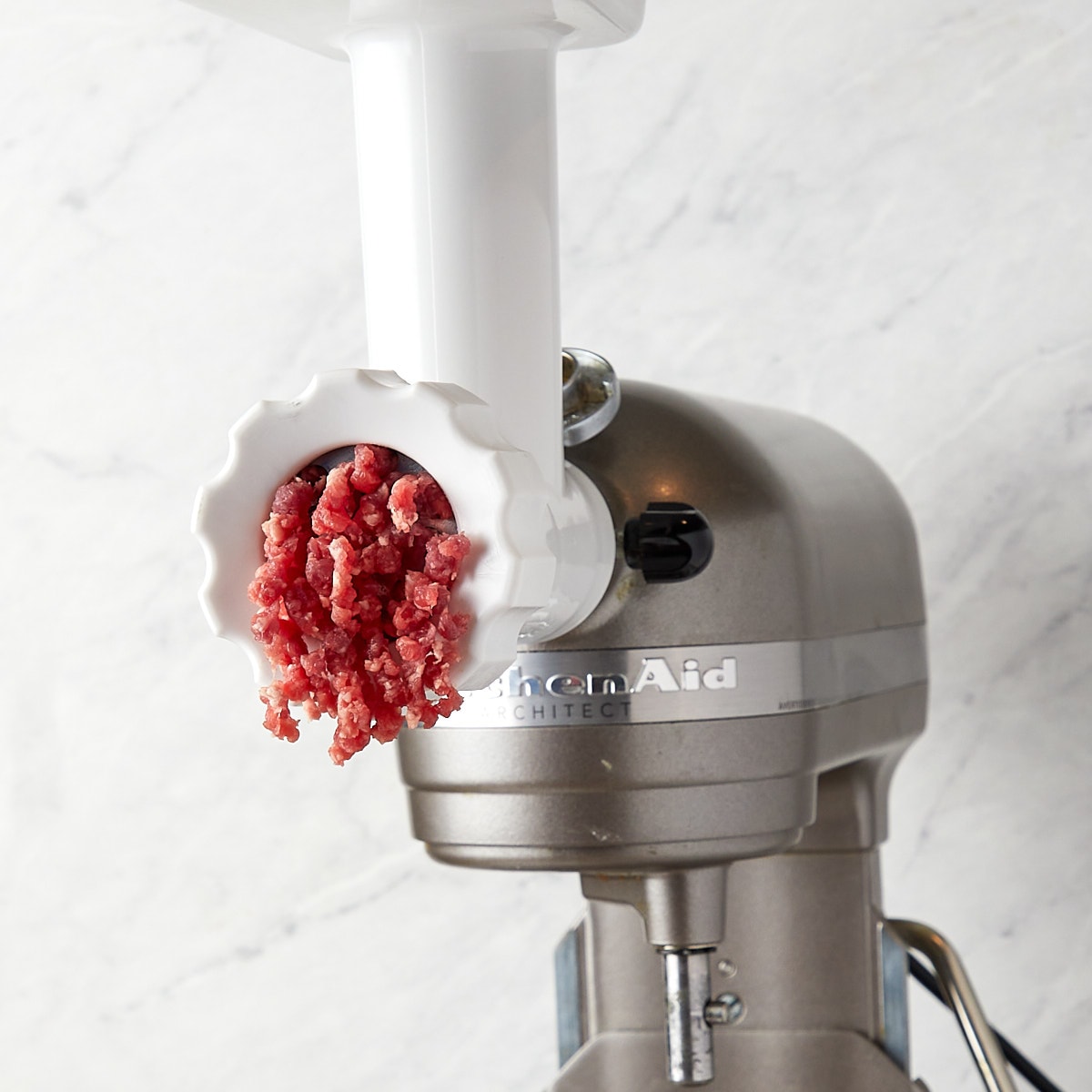
Using a KitchenAid with grinder attachment: Attach the cold meat grinder attachment to your KitchenAid stand mixer and place a bowl under the grinder attachment. Turn on the KitchenAid mixer to a low speed and begin feeding the beef cubes into the grinder’s feed tube one piece at a time. Use the food pusher to guide the meat down into the grinder. It’s essential to work slowly to avoid clogging or overloading the grinder. Place a bowl beneath the grinder to catch the beef as it is ground.
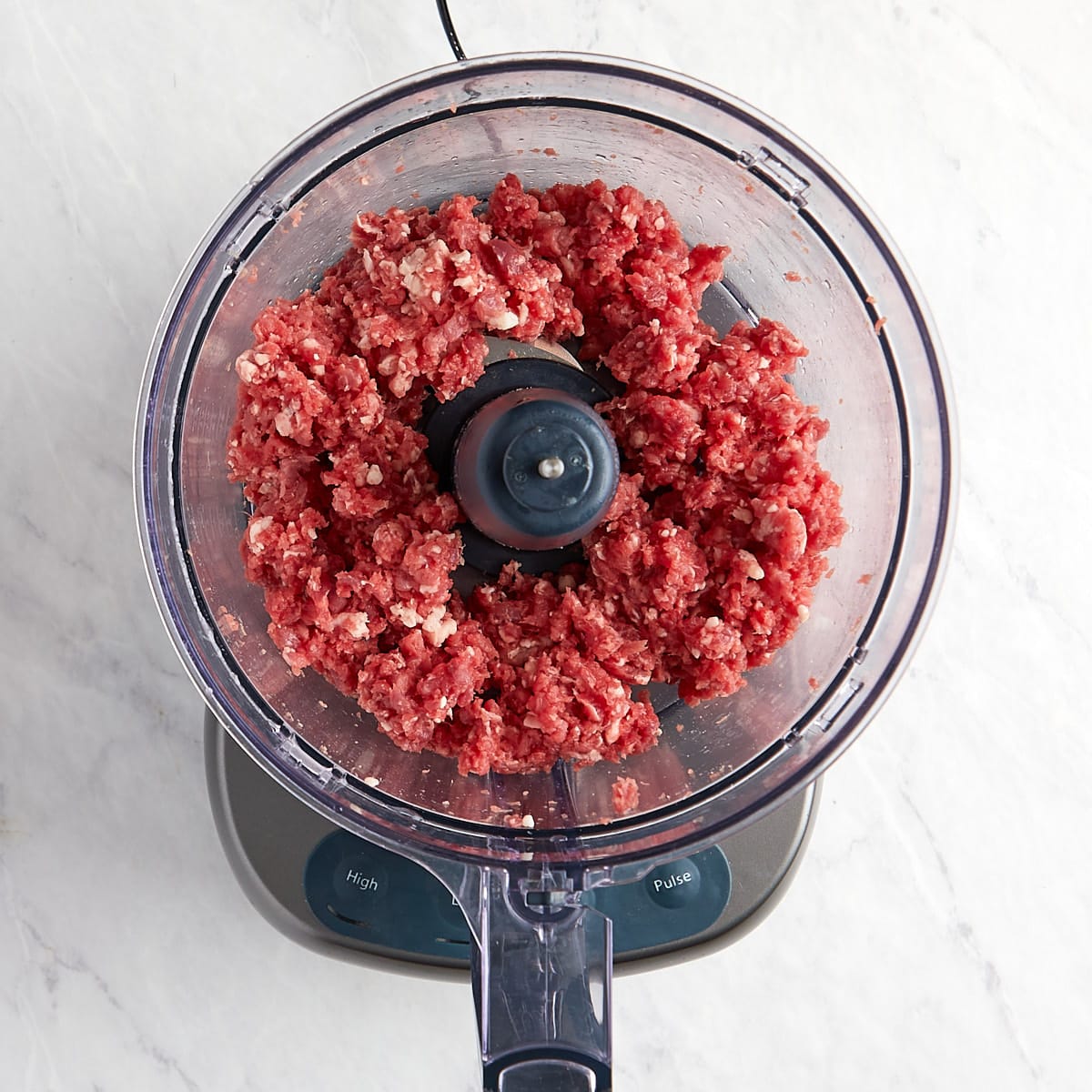
Using a food processor: Place the food processor’s blade, bowl, and the beef in the freezer for about 15-20 minutes prior to grinding the beef. Place a portion of the cold, cubed beef into the food processor being careful not to overload the processor. Work in batches if necessary to avoid overcrowding. Pulse the meat in short bursts to grind it evenly and do not continuously run the processor. Continue to pulse until you have reached the desired coarseness of ground beef. Repeat this process with the remaining batches of beef until you have ground all the meat.

4. Form the patties: Once you’ve ground all the beef, you can form the hamburger patties. Make them as large as you want – from a quarter pound up to a half pound if you’re feeling indulgent. We prefer about a third of a pound for our patties, but it’s all a matter of taste. You’ll notice your hands don’t get all sticky from the myosin like store bought ground beef. Refrigerated your burger patties until they are ready to be cooked to keep the fat solidified which will help prevent them from falling apart as they cook. Season with salt and pepper just before cooking.
Freezing and Storage
Freezing and storing fresh ground beef is a great way to enjoy delicious burgers all summer long.
Freezing Freshly Ground Beef: Place your formed patties in a single layer on a baking sheet that has been lined with wax or parchment paper then transfer the baking sheet to the freezer. Once the patties are frozen, transfer them to an air-tight, freezer safe bag or container. We recommend putting a square piece of wax or parchment paper between the frozen patties to keep them from sticking together. Frozen patties can be kept in the freezer for up to 3 months.
Thawing and Using Freshly Ground Beef: Frozen burger patties should be thawed in the refrigerator before cooking. It can be kept in the refrigerator for up to 2 days.
Recipe Tips and Notes
- Trim the Fat. Remove any excess fat, sinew, or silver skin from the meat before grinding. While fat is crucial for flavor and juiciness, too much or the wrong kind (like sinewy parts) can affect the texture negatively.
- Keep it Cold. Both the beef as well as the grinder attachment/metal blade need to be kept as cold as possible. As the beef warms, so does the fat which can get messy and make clean up more difficult.
- Cut into Chunks. Before grinding, cut your meat into 1-2 inch chunks. This size is manageable for most grinders and ensures an even grind.
- Grind in Batches. If you’re grinding a large amount of meat, do it in batches to keep the meat as cold as possible throughout the process. This prevents any warmth from affecting the fat’s consistency.
- Grind Twice if Necessary. For a finer texture, consider grinding the meat twice. However, for most burgers, a single grind is sufficient to provide the ideal balance between texture and juiciness.
- Don’t Overwork the Ground Beef. When forming your burger patties, mix the meat as little as possible. Overworking the meat can lead to tough burgers that fall apart easily. Gently shape your burgers without pressing them too hard.
- Chill the Patties. Before grilling or cooking, refrigerate the burger patties for about 30 minutes. This helps the fat solidify slightly, which keeps the burgers together better during cooking.
- Don’t Press Down on the Burgers While Cooking. Pressing down on the burgers with a spatula releases juices and can cause the burgers to fall apart. Let the burgers cook undisturbed, flipping them only once midway through cooking. This will also help them get a nice seared outer layer that will help keep the burgers juicy.
- Flip the Burgers Once. Wait until the burgers develop a crust on the bottom and release easily from the grill or pan before flipping. This crust helps keep the burger together.

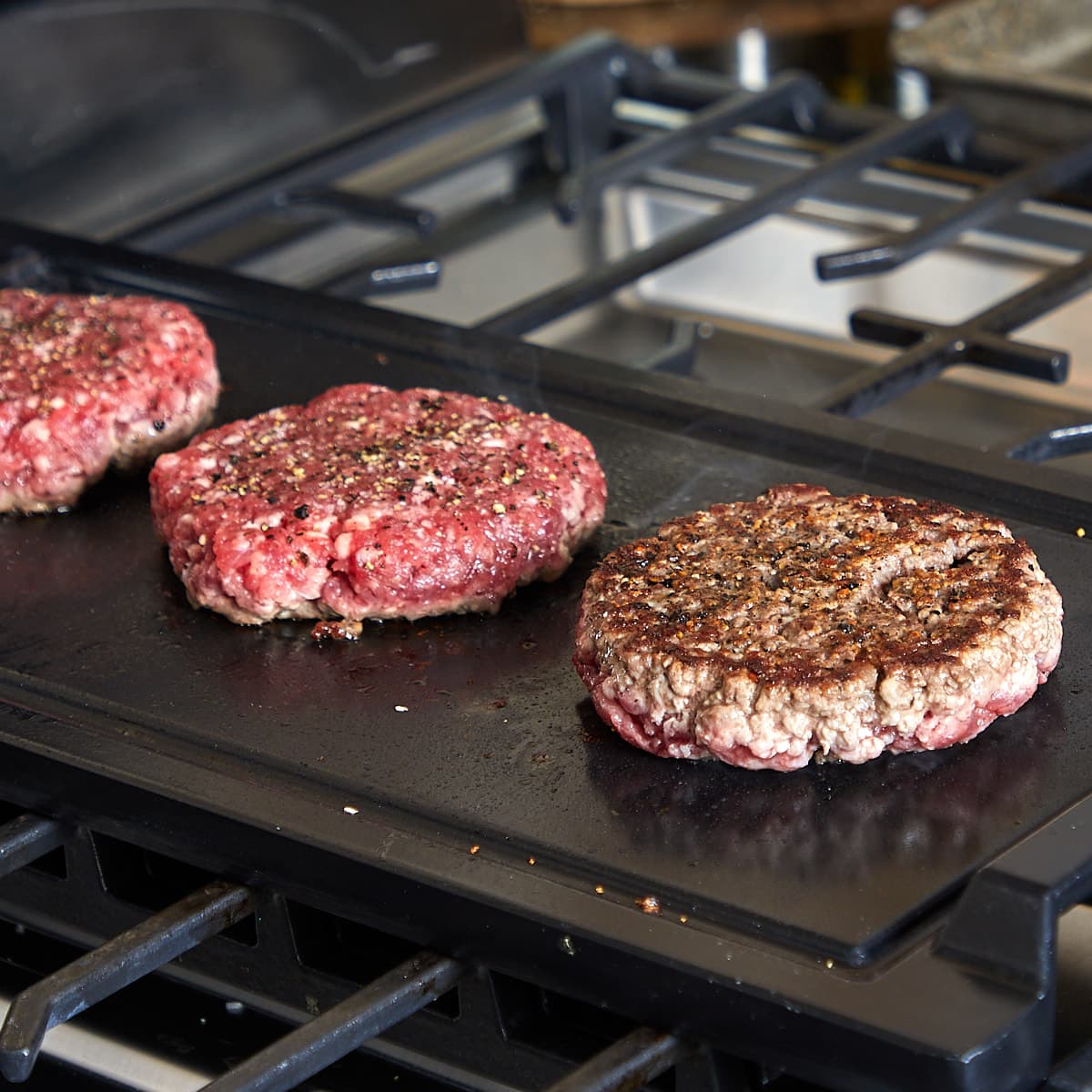
More Burgers & Sliders To Try
Looking for burger or slider recipes? Try these other favorites:
- Classic Texas Burger – Made with juicy beef patties, crisp pickles slices, fresh diced onions, and a generous smear of mustard. These burgers are a must at your next backyard cookout.
- Bacon Blue Cheese Burger – Experience the ultimate burger crafted from premium ground beef, these gourmet patties are grilled and topped with crispy bacon and melty blue cheese
- Caramelized Onion Mushroom Swiss Turkey Burger – These delicious burger is loaded with sweet caramelized onions and sautéed mushrooms and are the perfect burger for any BBQ or gathering. Bonus: all the ingredients can be prepped ahead of time.
Let’s Connect! If you make this recipe or any other recipe on Casual Epicure, please don’t forget to rate the recipe and leave a comment below. It helps others who are considering making our recipes and we love hearing about your cooking experiences. And if you snapped some shots, share them on Instagram, and be sure to tag @casual.epicure so we can feature them in our stories.
How to Grind Beef for Burgers
This recipe may contain paid affiliate sales links. As an Amazon Associate, I earn from qualifying purchases. Please see my full disclaimer policy for details.
Equipment
- 1 KitchenAid Mixer with Meat Grinder Attachment
Ingredients
- 12 ounces brisket
- 12 ounces boneless short ribs
Instructions
Grinding Beef Using a KitchenAid
- Trim away any excess fat from the brisket and short ribs and cut the beef into small, evenly-sized pieces that can easily fit into the grinder's feed tube.
- Place the meat grinder attachment and the beef in the freezer for about 15-20 minutes.
- Attach the meat grinder attachment to your KitchenAid stand mixer. Place a bowl under the grinder attachment.
- Turn on the KitchenAid mixer to a low speed. Start feeding the beef cubes into the grinder's feed tube one piece at a time. Use the food pusher to guide the meat down into the grinder. It's essential to work slowly to avoid clogging or overloading the grinder.
- Place a bowl beneath the grinder to catch the beef as it comes out of the grinder.
- Once you've ground all the beef, you can use it immediately in your recipes or store it in the refrigerator in an airtight container for later use.
Grinding Beef Using a Food Processor
- Trim away any excess fat from the beef and cut the meat into small, evenly-sized pieces.
- Place the food processor's blade, bowl, and the beef in the freezer for about 15-20 minutes.
- Place a portion of the cold, cubed beef into the food processor. Don't overload the processor; work in batches if necessary to avoid overcrowding.
- Pulse the meat in short bursts to grind it evenly. Do not continuously run the processor; use the pulse function to control the consistency.
- Process until you have reached the desired coarseness of ground beef.
- Continue this process with the remaining batches of beef until you have ground all the meat.
- Once you've ground all the beef, you can use it immediately in your recipes or store it in the refrigerator in an airtight container for later use.

